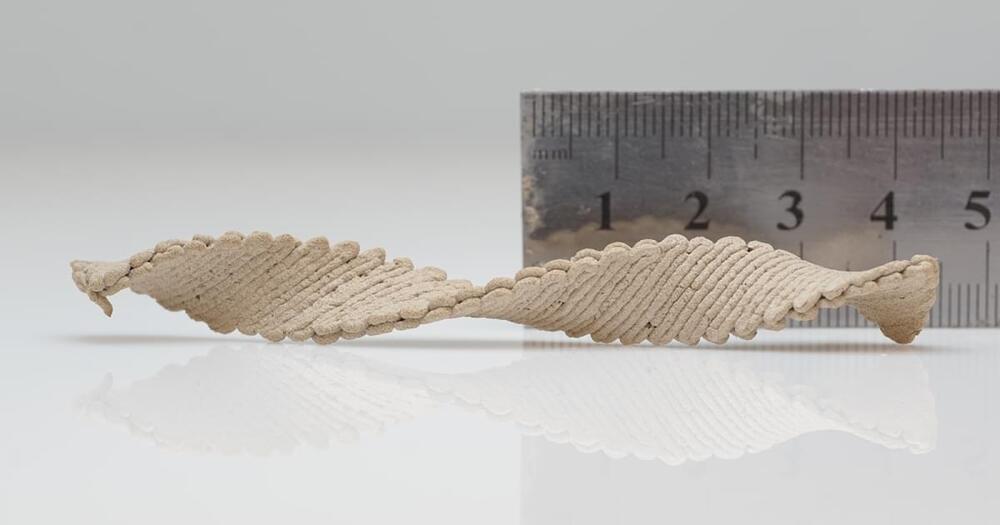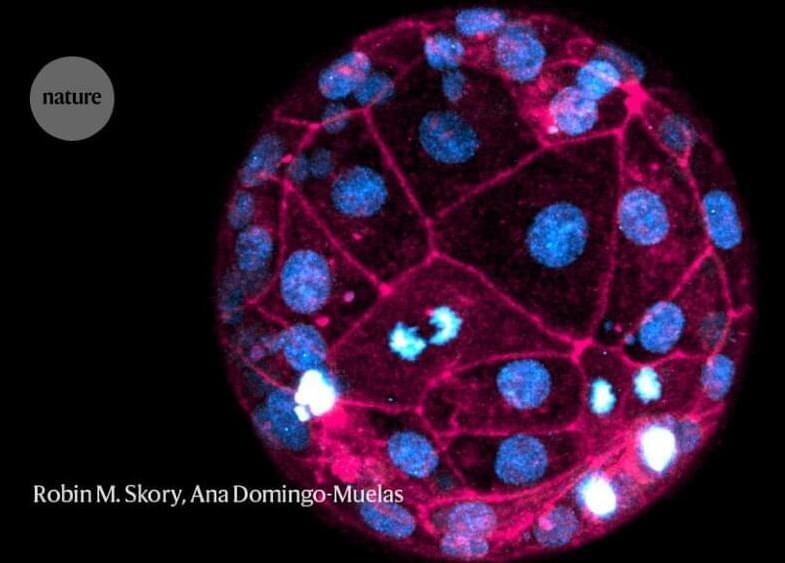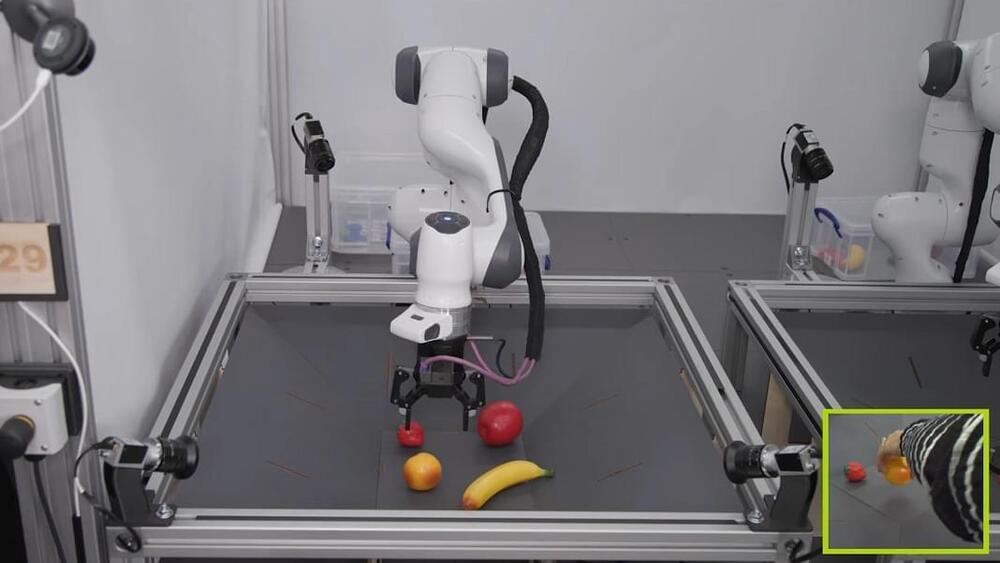Archive for the ‘innovation’ category: Page 67
Jul 7, 2023
Threads, Twitter and Mark Zuckerberg’s long history of copycat apps and features
Posted by Omuterema Akhahenda in categories: biotech/medical, innovation
Mark Zuckerberg isn’t particularly shy about copying a good idea when he sees one.
From cribbing Snapchat’s stories feature to cloning TikTok in the form of Instagram Reels, the Facebook co-founder has a long and well-documented history of being a copycat.
Zuckerberg’s latest not-quite-innovation comes in the form of Threads, an Instagram-based Twitter competitor.
Jul 6, 2023
How Generative AI Can Be Combined With Causal AI To Transform DevOps Innovation
Posted by Shubham Ghosh Roy in categories: innovation, robotics/AI
One way to achieve this is to combine GPTs with causal AI—a precise and trustworthy type of AI that provides rich and accurate context, which is particularly valuable in cloud observability, analytics and automation.
Causal AI observes the actual relationships within a system, such as a multicloud technology stack, and delivers detailed and precise answers in near real time based on these observations. These answers enable users to discern the cause, type, severity, risk, impact and location of any issue flagged by the AI with very high precision based on real-time observed facts and their interdependencies.
In the future, DevOps teams can use automated prompt engineering to feed real-time data and causal AI-derived context to their GPT. As a result, the answers they receive will be more relevant, accurate and actionable.
Jul 5, 2023
3D-printed wood furniture could ship flat, then dry into shape
Posted by Omuterema Akhahenda in categories: 3D printing, innovation

A new way of 3D printing wood that takes advantage of warping could change how we build things in the future — an innovation that could potentially save us all time and money.
The challenge: Wood is made of fibers that absorb moisture like a sponge. If lumber isn’t dried properly, the wood will eventually shrink — bending or twisting in different directions depending on the orientation of the fibers.
Continue reading “3D-printed wood furniture could ship flat, then dry into shape” »
Jul 3, 2023
How Long Until We Reverse the Clock? | Dr David Sinclair
Posted by Montie Adkins in categories: innovation, life extension

https://youtube.com/watch?v=K-70S1oycR4
1:33…“10 years”.
Dive into the fascinating world of aging research with this thought-provoking video. Join us as we explore the latest breakthroughs and scientific advancements on the quest to reverse aging. Discover the potential strategies, therapies, and technologies that hold promise for extending healthspan and pushing the boundaries of human longevity. Get ready to embark on an exciting journey towards understanding the future of aging reversal.
Continue reading “How Long Until We Reverse the Clock? | Dr David Sinclair” »
Jul 3, 2023
AI and Humanity’s Future
Posted by Henrique Jorge in categories: augmented reality, automation, big data, computing, disruptive technology, evolution, futurism, innovation, internet, machine learning, robotics/AI, singularity, supercomputing, transhumanism

The concept of a computational consciousness and the potential impact it may have on humanity is a topic of ongoing debate and speculation. While Artificial Intelligence (AI) has made significant advancements in recent years, we have not yet achieved a true computational consciousness that can replicate the complexities of the human mind.
It is true that AI technologies are becoming more sophisticated and capable of performing tasks that were previously exclusive to human intelligence. However, there are fundamental differences between Artificial Intelligence and human consciousness. Human consciousness is not solely based on computation; it encompasses emotions, subjective experiences, self-awareness, and other aspects that are not yet fully understood or replicated in machines.
The arrival of advanced AI systems could certainly have transformative effects on society and our understanding of humanity. It may reshape various aspects of our lives, from how we work and communicate to how we approach healthcare and scientific discoveries. AI can enhance our capabilities and provide valuable tools for solving complex problems.
However, it is important to consider the ethical implications and potential risks associated with the development of AI. Ensuring that AI systems are developed and deployed responsibly, with a focus on fairness, transparency, and accountability, is crucial.
Jun 28, 2023
Chinese ‘breakthrough’ allows making alloys with diverse metals at lower temperatures
Posted by Gemechu Taye in categories: innovation, materials
The simplicity of the approach stumped even reviewers of the journal Nature and needed further proof to be believed.
Researchers at the College of Chemistry and Molecular Sciences at Wuhan University in China have achieved a significant ‘breakthrough’ in materials science that allows alloys to be made from a diverse range of metals and at much lower temperatures than conventional methods, the South China Morning Post.
Since the Bronze Age, alloys have contributed to the advancement of our civilization. Modern-day applications of alloys involve creating and manufacturing high-entropy alloys (HEAs) composed of five or more metallic elements.
Jun 28, 2023
DeepMind’s New Self-Improving Robot Is Quick to Adapt and Learn Fresh Skills
Posted by Kelvin Dafiaghor in categories: innovation, robotics/AI
While autonomous robots have started to move out of the lab and into the real world, they remain fragile. Slight changes in the environment or lighting conditions can easily throw off the AI that controls them, and these models have to be extensively trained on specific hardware configurations before they can carry out useful tasks.
This lies in stark contrast to the latest LLMs, which have proven adept at generalizing their skills to a broad range of tasks, often in unfamiliar contexts. That’s prompted growing interest in seeing whether the underlying technology—an architecture known as a transformer—could lead to breakthroughs in robotics.
In new results, researchers at DeepMind showed that a transformer-based AI called RoboCat can not only learn a wide range of skills, it can also readily switch between different robotic bodies and pick up new skills much faster than normal. Perhaps most significantly, it’s able to accelerate its learning by generating its own training data.
Jun 27, 2023
In a Major Advance, Scientists Reprogram Skin Cells to Become Placenta
Posted by Shubham Ghosh Roy in categories: biotech/medical, innovation

In an organism, different kinds of cells carry out specific, specialized functions. Scientists can grow and study various types of cells in the lab. For a long time, a source of many of those cell lines were cancer samples that could be easily cultured over many generations. But those cells were not always representative of a particular cell type. Now, following huge breakthroughs, scientists learned how to create stem cells from adult skin cells. This has allowed scientists to utilize adult cells like those from the skin to create induced pluripotent cells (iPSCs), which can then be made into virtually any cell type.
The creation of so-called iPSCs was made possible through changing gene expression in cells, often with certain molecules or specialized proteins. Cells can also now be directly reprogrammed in some ways, without needing to bring them to a pluripotent state. The number of cell types that can be generated in this way is also expanding, bringing new insights into how specialized cells function.
Jun 27, 2023
High-performance computing, AI and cognitive simulation helped LLNL conquer fusion ignition
Posted by Shubham Ghosh Roy in categories: innovation, robotics/AI

Part 10 a series of articles describing the elements of Lawrence Livermore National Laboratory’s fusion breakthrough.
For hundreds of Lawrence Livermore National Laboratory (LLNL) scientists on the design, experimental, and modeling and simulation teams behind inertial confinement fusion (ICF) experiments at the National Ignition Facility (NIF), the results of the now-famous Dec. 5, 2022, ignition shot didn’t come as a complete surprise.












